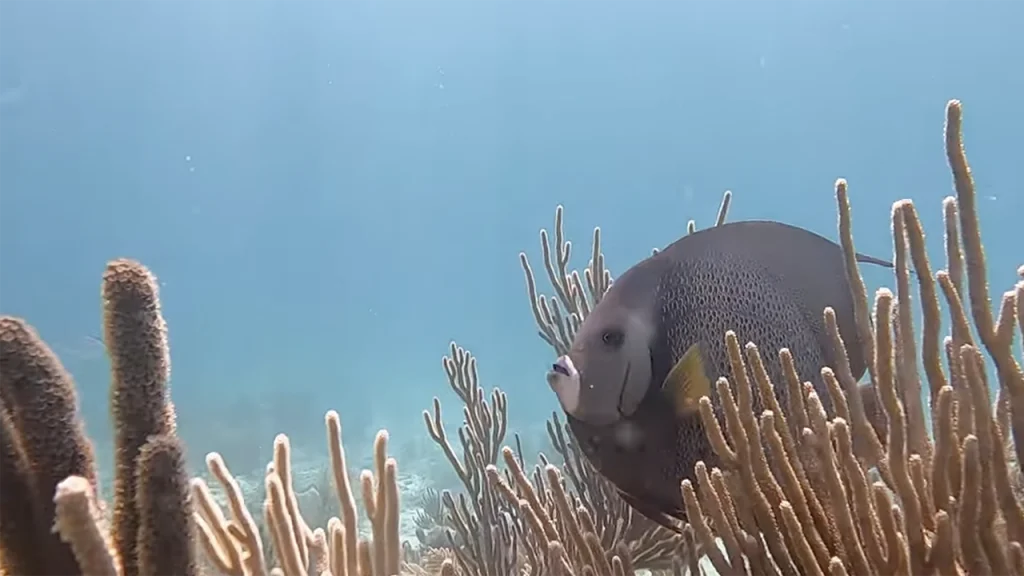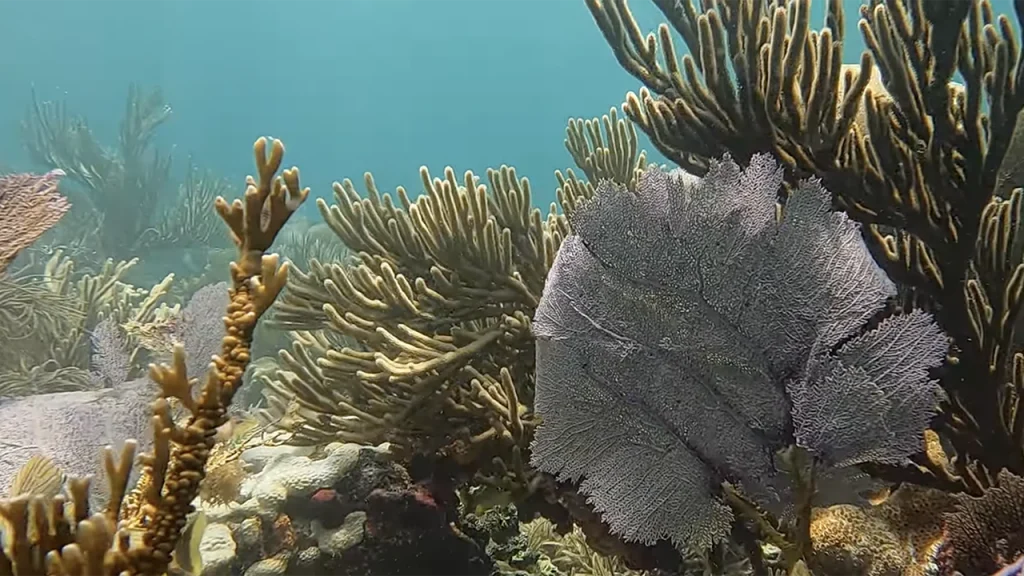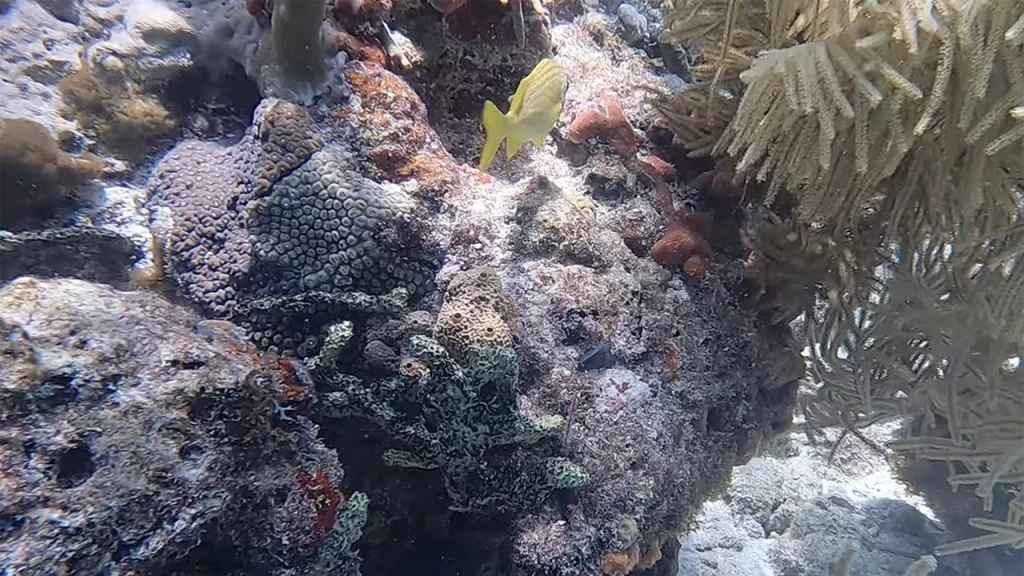Table of Contents

Pervis is an excellent dive site for those looking to experience the natural beauty of the Florida Keys’ underwater world while participating in conservation efforts.
Article at a Glance
- Location: Pervis is situated in Islamorada, part of the beautiful Florida Keys, known for its vibrant underwater ecosystems.
- Depth Range: The dive site features depths between 35 to 45 feet (10 to 14 meters), making it accessible for divers of all skill levels.
- Visibility: Divers can typically enjoy excellent visibility ranging from 60 to 100 feet (18 to 30 meters), especially during the spring and summer months.
- Best Time to Dive: The optimal diving season is from April to September, when water temperatures are warm and marine life is most active.
- Marine Life: Expect to see a diverse array of marine species, including blue parrotfish, nurse sharks, and opportunities for lionfish culling.
- Activities: Pervis offers engaging activities such as drift diving and coral restoration, allowing divers to contribute to conservation efforts while enjoying their experience.
- Suitability: The site is ideal for both beginners looking to learn in a safe environment and advanced divers seeking unique underwater experiences.
Pervis Islamorada
Overview of Pervis Dive Site
- Depth: The site ranges from 35 to 45 feet, making it accessible for various skill levels.
- Marine Life: Divers can expect to see a variety of species, including blue parrotfishand opportunities for lionfish culling, which is part of efforts to manage invasive species in the area. The site features beautiful hard corals, including large star coral structures and significant barrel sponges.
- Diving Conditions: Pervis is particularly suitable for drift diving, allowing divers to glide along the currents while exploring the rich biodiversity of the reefs.
Additional Features
- Coral Diversity: The Pervis site is noted for its healthy coral formations, which contribute to its status as a prime diving location in the Florida Keys. The area supports over 517 species of fish, highlighting its ecological importance.
- Dive Services: Local dive centers, such as Key Dives and Islamorada Dive Center, offer guided tours and instruction at this site, ensuring that divers have a safe and enjoyable experience. They provide equipment rentals, dive courses, and personalized charter options for groups.
What Marine Life Can I Expect To See?
Marine Life at Pervis
- Blue Parrotfish: Known for their vibrant colors and unique beak-like mouths, these fish are a common sight at this dive site1.
- Lionfish: This invasive species is often targeted for culling by divers, as they pose a threat to local ecosystems. Participating in lionfish culling helps manage their population while providing an exciting challenge for divers.
- Hard Corals: The site features beautiful hard corals, including large star coral structures and barrel sponges, which provide habitat for various marine species.
- Various Fish Species: Expect to see a diverse array of fish, including nurse sharks, moray eels, and potentially even larger species like goliath groupers in nearby areas.
- Turtles and Rays: While not guaranteed, sightings of sea turtles and spotted eagle rays can occur, adding to the excitement of the dive experience.

What Do Divers Say About This Site?
Diver Experiences at Pervis
- Accessibility and Depth: Many divers appreciate that Pervis is suitable for all skill levels due to its depth range of 35 to 45 feet, making it ideal for both beginners and experienced divers alike.
- Marine Life Encounters: Divers frequently mention the abundance of marine life, particularly the vibrant blue parrotfish and the opportunity to participate in lionfish culling. This not only adds an element of excitement but also contributes to local conservation efforts.
- Coral and Reef Structure: The site’s beautiful hard corals, including large star coral structures and barrel sponges, receive high praise. Divers enjoy exploring these formations, which are home to diverse marine species and contribute to a visually stunning underwater landscape.
- Drift Diving Experience: The drift diving conditions at Pervis are often highlighted as a highlight. Divers enjoy the gentle currents that allow for a relaxed exploration of the reef while observing the rich marine biodiversity.
Key Information
| Category | Details |
|---|---|
| Location | Pervis, Islamorada, Florida Keys |
| Depth Range | 35 to 45 feet (10 to 14 meters) |
| Visibility | 60 to 100 feet (18 to 30 meters), varies by season |
| Skill Level | Suitable for beginners and advanced divers |
| Best Time to Dive | April to September |
| Water Temperature | 75°F to 85°F (24°C to 29°C) during peak season |
| Marine Life | Blue parrotfish, lionfish, nurse sharks, various corals |
| Diving Conditions | Generally calm with good visibility |
| Activities Available | Drift diving, lionfish culling, coral restoration |
| Recommended Dive Operators | Local dive shops such as Key Dives and Islamorada Dive Center |
Highlights of Diving This Site?
- Ideal Depth for All Levels: The site is located at a depth of 35 to 45 feet, making it accessible for both novice and experienced divers. This depth allows for comfortable exploration without the need for extensive decompression time.
- Rich Marine Biodiversity: Divers frequently encounter a diverse array of marine life, including blue parrotfish, nurse sharks, and various species of coral. The vibrant ecosystem supports numerous fish species, creating a lively underwater environment.
- Lionfish Culling Opportunities: Pervis is known for lionfish culling, which not only adds an exciting challenge but also contributes to local conservation efforts by managing this invasive species.
- Beautiful Coral Structures: The site features stunning hard corals, including large star coral formations and barrel sponges. These structures provide habitat for various marine species and enhance the visual appeal of the dive.
- Drift Diving Experience: Pervis is particularly suitable for drift diving, allowing divers to glide along with the current while taking in the sights. This makes for a relaxed and enjoyable diving experience.
- Conservation Efforts: Divers often appreciate the emphasis on conservation at Pervis, as many local dive operators promote responsible diving practices and participate in reef monitoring and restoration projects.
My Favorite Dive Computers
I have compared the 3 top diving computers for each category to help making the right choice easier:
Iconic Spots At This Site
- Star Coral Structures: The site features impressive large star coral formations, which are not only visually striking but also serve as habitats for various marine species. These corals contribute significantly to the biodiversity of the area.
- Barrel Sponges: Divers often encounter big barrel sponges, which add to the unique underwater landscape. These sponges are essential for the reef ecosystem, providing shelter and feeding grounds for many marine organisms.
- Drift Diving Experience: Pervis is known for its excellent drift diving conditions. The gentle currents allow divers to effortlessly glide along the reef while observing the vibrant marine life, making for a memorable experience.
- Lionfish Culling Areas: The site provides opportunities for divers to participate in lionfish culling, an activity that helps manage this invasive species while adding an exciting element to the dive.
- Diverse Marine Life: While exploring Pervis, divers can expect to see a variety of fish, including colorful blue parrotfish and other reef inhabitants, enhancing the overall diving experience.
Environmental Conservation Efforts at Pervis
- Coral Restoration Programs: Organizations like I.CARE (Islamorada Conservation and Restoration Education) offer programs where divers can participate in coral restoration activities. This includes growing coral seedlings in nurseries and transplanting them onto reefs during dive trips, helping to enhance reef resilience and biodiversity.
- Collaboration with Marine Scientists: Divers can join hands-on coral restoration trips led by marine scientists, which are designed to educate participants about the marine ecosystem while actively engaging them in restoration efforts. These programs often include educational sessions followed by practical work on coral nurseries.
- Citizen Science Initiatives: Dive operators collaborate with organizations such as Reef Renewal USA to involve divers in citizen science projects. Participants receive training and then assist in outplanting nursery-raised corals onto the reefs, contributing directly to the restoration process.
- Educational Opportunities: Facilities like the Mote Marine Laboratory & Aquariumprovide educational resources and tours related to coral reef ecosystems. These initiatives help raise awareness about the importance of coral conservation and the challenges faced by these ecosystems.
- Volunteer Activities: Various dive shops offer volunteer opportunities for divers interested in conservation, allowing them to contribute to reef monitoring, maintenance, and restoration efforts while enjoying their diving experience.

Maximizing Your Diving Experience at Pervis
- Choose the Right Dive Operator: Select a reputable dive shop that emphasizes safety, environmental conservation, and offers guided tours to ensure you explore the best spots at Pervis. Experienced guides can enhance your understanding of the marine ecosystem.
- Participate in Conservation Activities: Engage in lionfish culling or coral restoration programs offered by local dive operators. These activities not only contribute to the health of the reef but also provide a unique and rewarding aspect to your diving experience.
- Practice Efficient Finning Techniques: Learn and practice various finning techniques such as the frog kick or modified flutter kick. These techniques help you move more efficiently through the water, conserve energy, and minimize disturbance to the marine environment1.
- Focus on Trim Position: Maintain a proper trim position to enhance your hydrodynamics while diving. A horizontal body position allows for smoother movement through the water, making it easier to navigate and observe marine life without excessive effort2.
- Plan Your Dive: Before diving, familiarize yourself with the site’s layout and key features. Discuss with your dive leader about specific areas of interest, such as coral formations or marine life hotspots, to ensure you make the most of your time underwater.
- Use Proper Equipment: Ensure that your diving gear is well-fitted and appropriate for the conditions at Pervis. Consider using a wetsuit for thermal protection and ensure your buoyancy control device (BCD) is functioning correctly for better control during dives.
- Stay Relaxed and Aware: Keep a calm demeanor underwater to enhance your experience. Being relaxed allows you to enjoy the sights and sounds of the underwater world while maintaining awareness of your surroundings and dive buddies.
- Take Underwater Photography: If you’re interested in photography, consider bringing an underwater camera. Capturing images of the stunning coral formations and diverse marine life can enhance your memories of the dive.
Capturing Memories at Pervis: Photography Tips
- Use Adequate Lighting: Bring as much light as you can safely carry. Position your lights away from the camera lens to avoid backscatter, which can obscure your images. Consider using external strobes or video lights to enhance visibility and color saturation in your shots.
- Get Close and Fill the Frame: One of the most important rules in underwater photography is to get close to your subject—then get even closer. Water acts as a filter, dulling colors and reducing contrast, so minimizing the distance between your camera and the subject will improve image quality.
- Experiment with Angles: Shoot from various angles—above, below, and at eye level—to capture different perspectives of your subjects. Shooting upwards can provide better lighting and a striking blue-water background, making your subjects stand out.
- Plan Your Shots: Before diving, familiarize yourself with the site’s layout, including key features and marine life. This planning allows you to anticipate where to position yourself for optimal shots and helps ensure you have enough air for photography.
- Maintain Proper Buoyancy: Good buoyancy control is essential for stable shots. Practice your buoyancy skills before diving to ensure you can focus on composition without struggling to maintain position.
- Care for Your Equipment: Ensure that all O-rings on your camera housing are clean and properly sealed before entering the water to prevent flooding. After diving, rinse your equipment in fresh water and dry it carefully to maintain its longevity.
- Shoot During Optimal Light Conditions: If possible, dive during times when natural light is best—early morning or late afternoon. This can enhance the quality of your images as sunlight penetrates the water more effectively during these times.
- Respect Marine Life: While capturing images, be mindful of your surroundings. Avoid touching or disturbing marine life, and approach subjects slowly to minimize stress on them. This respectful behavior ensures a sustainable diving experience for everyone.
- Enjoy the Dive: Balance photography with enjoying the dive itself. While capturing stunning images is important, take time to soak in the beauty around you without the camera lens obstructing your view.
Frequently Asked Questions
When is the best time to dive Pervis?
The best time to dive at Pervis in Islamorada is generally during the spring and summer months, specifically from April to September.
Water Temperature: During these months, water temperatures typically range from 75°F to 85°F (24°C to 29°C), providing comfortable conditions for divers without the need for heavy wetsuits.
Visibility: Visibility is often at its best during the summer months, frequently exceeding 60 feet (18 meters). This clarity enhances the overall diving experience, allowing divers to fully appreciate the vibrant marine life and coral formations.
Marine Life Activity: Spring and summer are peak seasons for marine life activity, with many species more visible and active. This is particularly true for fish spawning events, which can attract larger predators and create dynamic underwater scenes.
Weather Conditions: The weather is generally more stable and pleasant during these months, with calmer seas that are ideal for diving. However, it’s essential to keep an eye on weather forecasts, especially during hurricane season (June to November).
What is the visibility like while diving Pervis?
Visibility while diving at Pervis is generally quite favorable, particularly during the optimal diving months of spring and summer (April to September). Divers can typically expect visibility to range from 60 to 100 feet (18 to 30 meters), depending on the conditions.
Seasonal Variations: During the warmer months, visibility tends to be better due to calmer seas and reduced sediment disturbance. In contrast, winter months may experience slightly lower visibility due to increased wave action and potential plankton blooms.
Weather Conditions: Recent weather events, such as heavy rainfall or storms, can affect visibility by introducing sediment into the water. However, clear days following such events often lead to improved conditions.
Marine Life Activity: While plankton blooms can reduce visibility temporarily, they also attract a variety of marine life, which can enhance the diving experience despite lower clarity.
How deep are the dives at Pervis?
Dives at Pervis typically range from 35 to 45 feet (approximately 10 to 14 meters) in depth. This depth range makes the site accessible for divers of various skill levels, allowing for comfortable exploration without extensive decompression requirements.
The site is ideal for both novice divers and experienced ones looking to enjoy the vibrant marine life and coral formations present in the area.
Is Pervis suitable for beginners?
Yes, Pervis is suitable for beginners. The dive site offers several features that make it an ideal choice for novice divers:
Shallow Depth: The dives typically range from 35 to 45 feet (10 to 14 meters), which is within the safe range for beginner divers. This depth allows for comfortable exploration without extensive decompression requirements.
Calm Conditions: Pervis generally experiences calm waters and good visibility, especially during the spring and summer months. These conditions create a more relaxed diving environment, which is beneficial for those who are still gaining confidence in their skills.
Diverse Marine Life: The site is rich in marine biodiversity, allowing beginners to enjoy observing various fish and coral formations, enhancing their overall diving experience.
Guided Tours Available: Many local dive operators offer guided tours specifically tailored for beginners, providing instruction and support to ensure a safe and enjoyable dive experience.
Is Pervis suitable for advanced divers?
Yes, Pervis is suitable for advanced divers as well.
Diverse Marine Ecosystem: Advanced divers will appreciate the rich biodiversity and vibrant coral formations, which provide opportunities for exploration and observation of various marine species, including larger fish and unique underwater landscapes.
Drift Diving Opportunities: The site is ideal for drift diving, allowing advanced divers to experience the thrill of gliding with currents while exploring the reef. This technique can enhance the diving experience and offer a different perspective on the underwater environment.
Conservation Activities: Advanced divers can engage in conservation efforts such as lionfish culling and coral restoration projects. These activities not only contribute to local marine health but also provide a rewarding challenge for experienced divers.
Varied Diving Conditions: The depth range of 35 to 45 feet allows advanced divers to practice their skills in a relatively safe environment while still being able to explore deeper areas if desired. This flexibility makes it an appealing site for those looking to refine their techniques.





